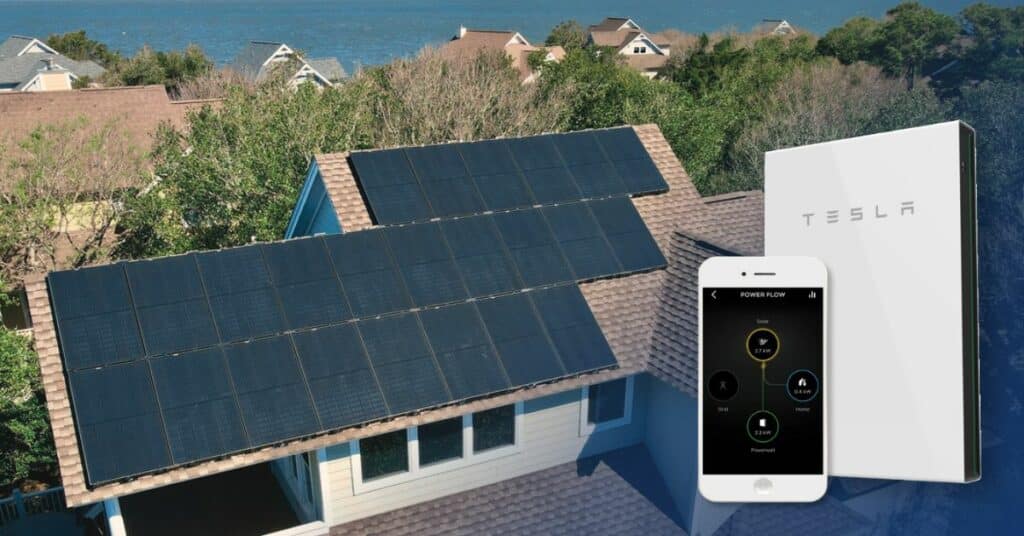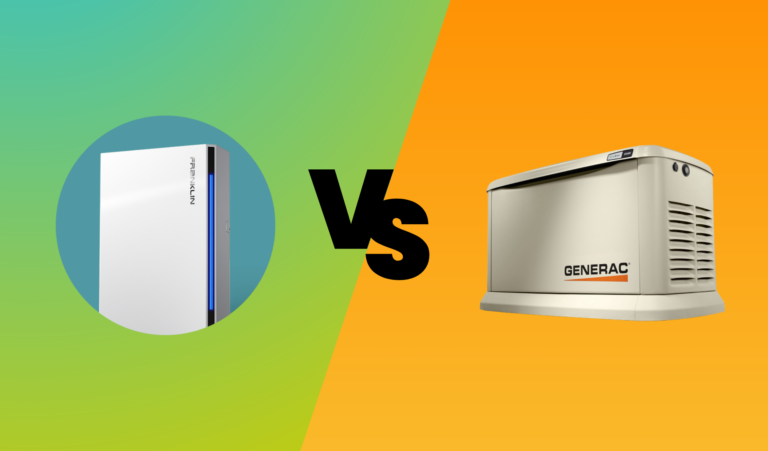What is Duke Energy’s Battery Control Incentive?
With the introduction of Duke Energy’s PowerPair Incentive for new solar + battery systems, Duke Energy also introduced a secondary program that existing solar battery customers can take advantage of.
That program is called Battery Control and it goes by ‘Power Manager’ (Duke Energy Carolinas) or ‘Energy Wise’ (Duke Energy Progress). As a Premier Certified Tesla Powerwall Installer and a Certified Duke Energy Trade Ally, we have the full scoop. Let’s dive into it!
How Much is Duke Energy’s Battery Control Incentive?
By opting into Battery Control, you can receive $6.50/kW each month by allowing Duke Energy to manage your battery (more on how this works in a later section). The incentive is based on battery size – more specifically, the continuous discharge capacity of your battery – and a capability factor.
What is a capability factor?
Good question! Here is direct language from Duke Energy: “The capability factor adjusts for operational and program constraints including but not limited to reliability of device connection, system losses and systems not always being fully charged at time of the event.”
A breakdown of what the incentive could look like for you based on your battery type:
| Battery Make & Model | Energy Capacity | Continuous Discharge Capacity | Battery Control Incentive | What you’ll get monthly | What you’ll get annually |
| Tesla Powerwall + | 13.5 kWh | 5 kW | $6.50/kW | $26 | $312 |
| Tesla Powerwall 2 | 13.5 kWh | 7.6 kW | $6.50/kW | $23 | $276 |
| Tesla Powerwall 3 | 13.5 kWh | 11.5 kW | $6.50/kW | $52 | $624 |
| Enphase IQ Battery 5P | 5 kWh | 3.84 kW | $6.50/kW | $17 | $204 |
| Fortress Power eVault Max 18.5 | 18.43 kWh | 9.2 kW | $6.50/kW | $42 | $504 |
| Generac PWRcell | 9 kWh – 36 kWh | 3.4 kW – 7.6 kW | $6.50/kW | $15 – $35 | $180 – $420 |
Can the incentive be applied to multiple solar batteries?
Yes, the incentive can be applied to multiple solar batteries, but the total combined incentive is capped. The maximum amount you can receive is based on a residential interconnection limit of 20kW. So the maximum incentive you could receive would be $91 a month or $1,092 annually.
Are there different incentives based on territory (Duke Energy Progress vs. Duke Energy Carolinas)?
Nope, the incentive is based on battery size, not territory. Both territories (Progress and Carolinas) follow the same chart for battery incentive payments!
Who is Eligible for Duke Energy’s Battery Control Incentive?
The Battery Control Incentive (Power Manager or Energy Wise) is available for any Duke Energy customers who want to opt in with an eligible battery.
Who isn’t eligible for Duke Energy’s Battery Control Incentive?
The only people who can’t opt in are the PowerPair RSC (Residential Solar Choice Rider)/TOU (Time-of-Use) folks who are enrolled in the Data-Only program for Battery Control. In most cases, you’ll be able to switch in two years if you decide you’d like to opt into Demand Response and receive the monthly incentive. Not sure if you’re eligible? Give our home solar educators a call →
Frequently Asked Questions:
Can customers installing a Tesla Powerwall 3 without solar receive the monthly Battery Control incentive?
Yes, a battery-only system can participate in the Battery Control program. An interconnection application is required if one has not already been submitted.
Can customers with a solar system under the old net metering program add a battery and enroll in the Battery Control program while staying on the old program?
Yep, these customers will remain grandfathered. These customers will be part of the Demand Response group, not the Data-Only option, which is limited to PowerPair participants (a.k.a. customers who install a new solar + battery system).
We’ve put together a flowchart to help you understand what you may be eligible for.
How Battery Control Works
There are two options for Battery Control. One is Demand Response, which receives the monthly incentive, and the other is Data-Only, which doesn’t.
If you are installing a new solar + battery system – you will be able to choose between Demand Response or Data-Only. Bonus: you’ll also be eligible for up to $9,000 thanks to the PowerPair Incentive!
If you are an existing battery customer or you want to add a battery – you can opt into Demand Response, but not Data-Only.
Data-Only
You won’t receive the monthly incentive, but you will have full control over your solar battery storage. You’ll just be providing Duke Energy with data as they work to better understand how battery storage supports our electric grid.
Demand Response
Duke Energy will have access to control your battery storage (with certain limitations). Duke Energy will send signals to your battery about 30-36 times a year to manage its settings—like charging, discharging, storing energy, returning settings to normal. These times are called Control Events. Your battery won’t be discharged below 20% capacity and you’ll have the ability to opt out of up to 4 events per year.
When will these control events occur?
Here is what Duke Energy has released:
- December-March: Up to 18 events
- May-September: Up to 9 events
- April, October, and November: Up to 9 events
How long will a Control Event last?
Event periods can last up to 48 hours. The charge and discharge length is battery system-dependent, but an event charge and discharge will typically range from 1 to 3 hours.
Benefits of Demand Response
- Maximize Your Savings — Earn up to $624 – $1,092 in annual utility bill credit while participating in Demand Response.
- Support Grid Stability — Contribute to maintaining clean and reliable energy in North Carolina.
- Energy Security — Participate in a way that fits your energy needs and preferences.
How long do you have to stay in the Battery Control Program?
10 years is the maximum length of the battery control program. The minimum contract term is 1 year, with the option to opt out anytime after that, forfeiting the monthly credit.
Can you switch between Demand Response and Data-Only?
For those who receive the PowerPair incentive AND enroll in the Battery Control program, you can switch your Duke Energy Meter Rider (Bridge Net Metering or RSC/TOU) after two years. This affects whether you are Demand Response or Data-Only. For example, if you begin on the Bridge Net Metering rider, you will be part of the Demand Response group, and thus receive the monthly Battery Control incentive. After two years, you can move to the RSC/TOU rider, which will move you to the Data-Only group, and you will lose your monthly battery incentive.
Customers who enroll in the Battery Control program OUTSIDE of the PowerPair incentive will remain in the Demand Response group regardless of rider.
How to Enroll in Battery Control
In order to take advantage of the $23 – $91 per month incentive, you’ll need to enroll in Battery Control.
For New Solar Customers
When you go solar, you’ll need to be on the Net Metering Bridge Rider to take advantage of Battery Control. We’ve got you covered! Our teams have been working with Duke Energy to better understand the ins and outs of the programs, so we’ll help walk you through all of this when it comes time.
For Existing Solar Customers
You’ll be able to enroll in Battery Control directly through your Tesla app. Go into your Tesla app and Navigate to Virtual Power Plant. Full instructions here →















